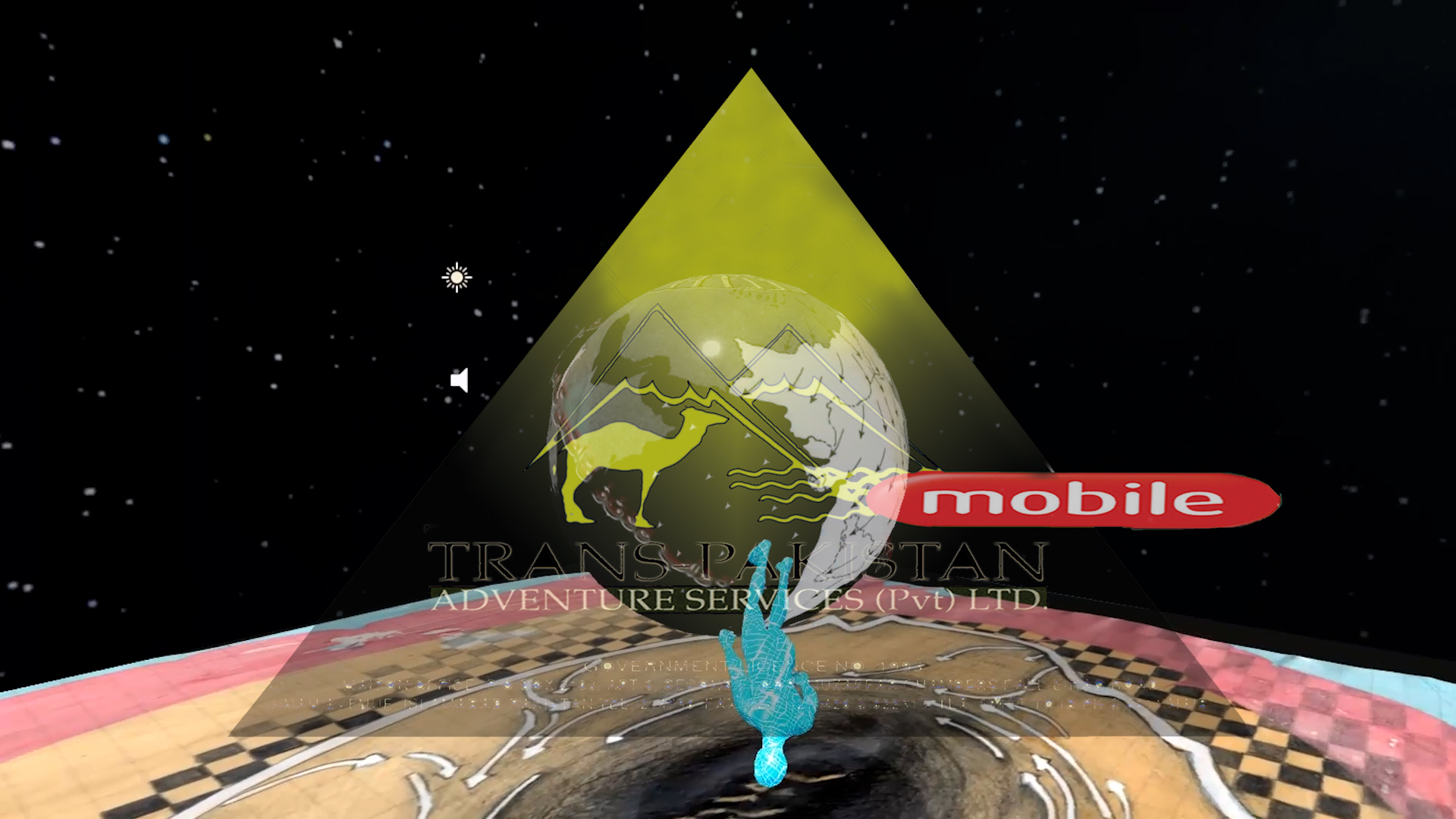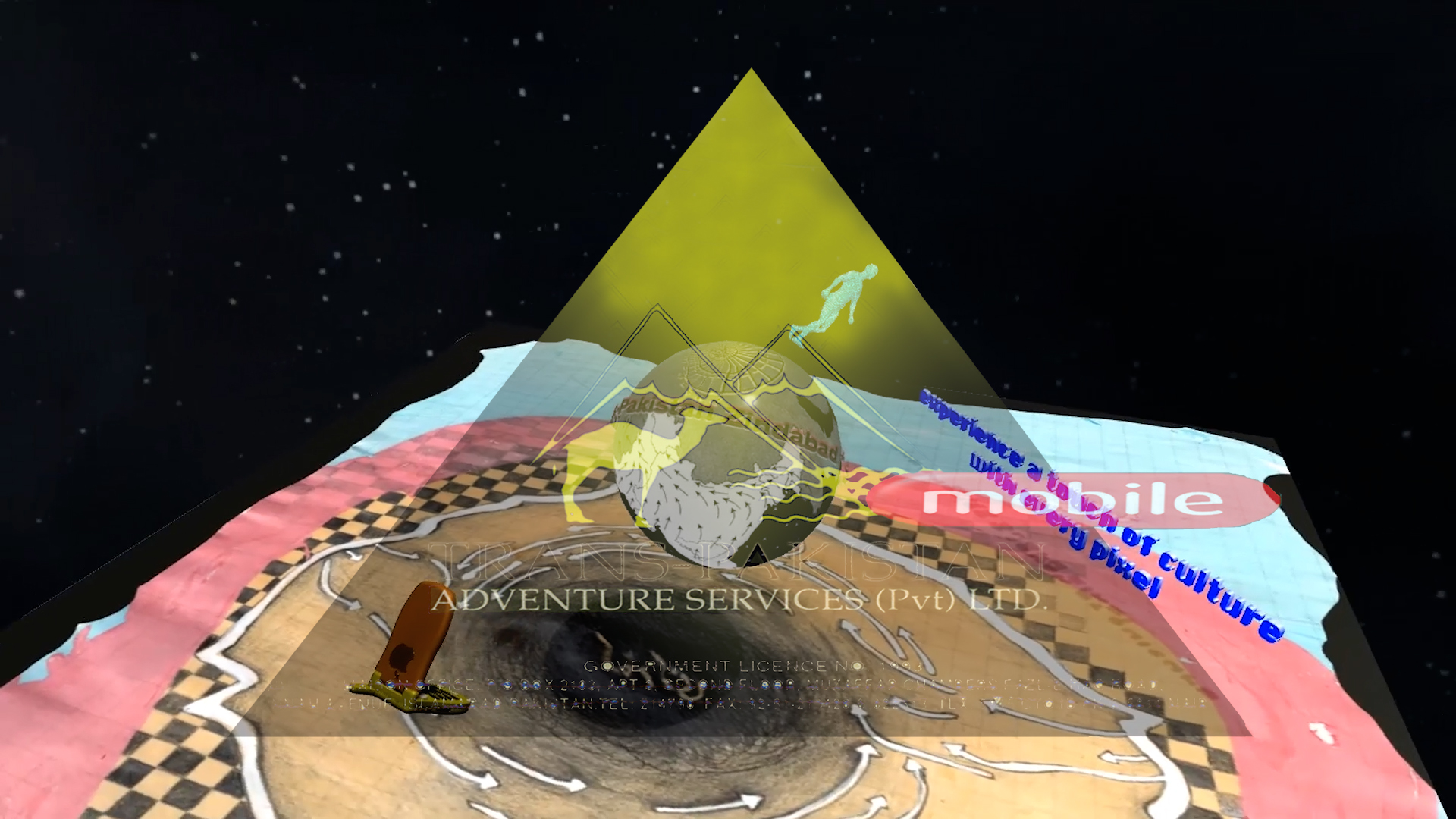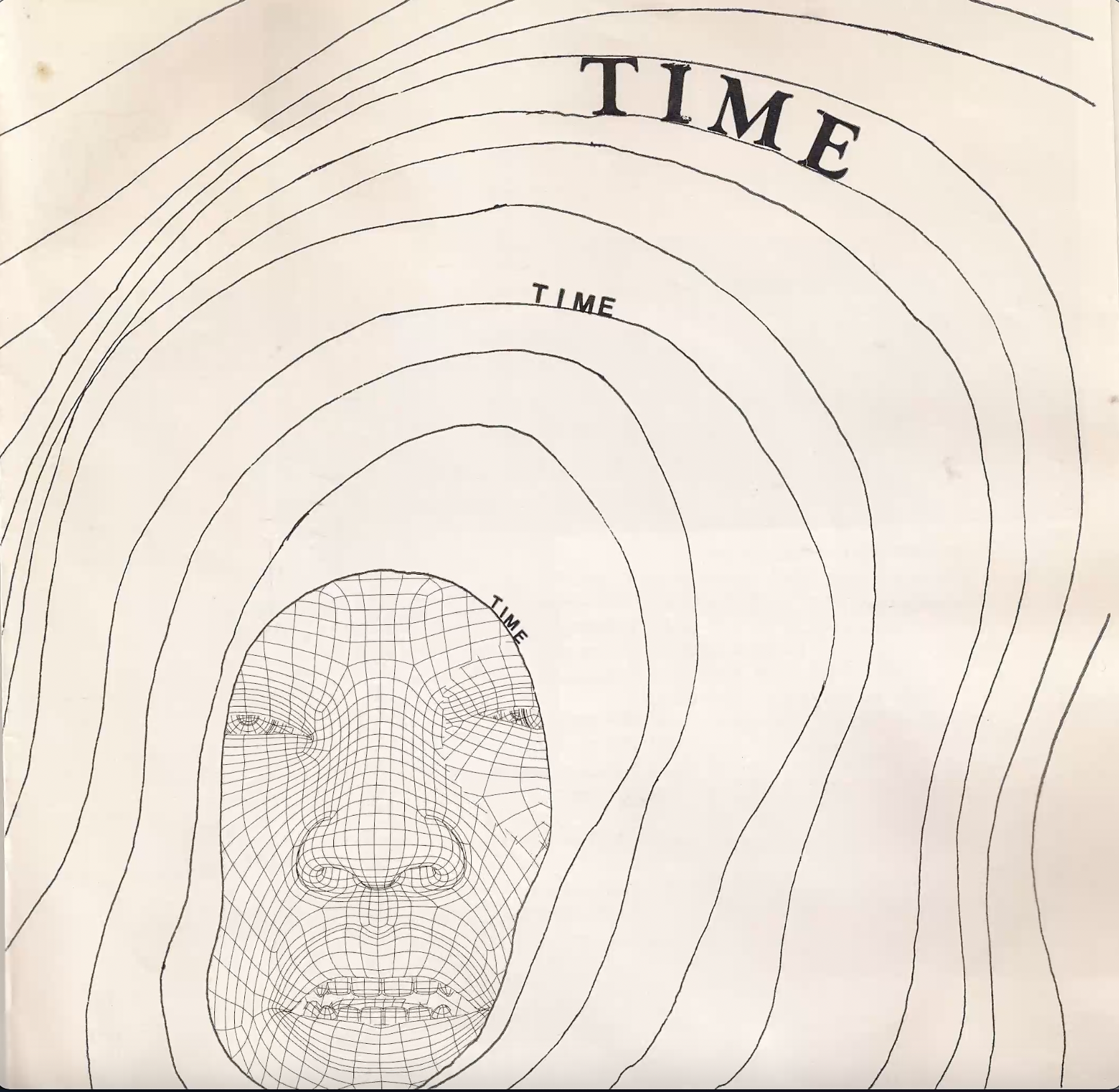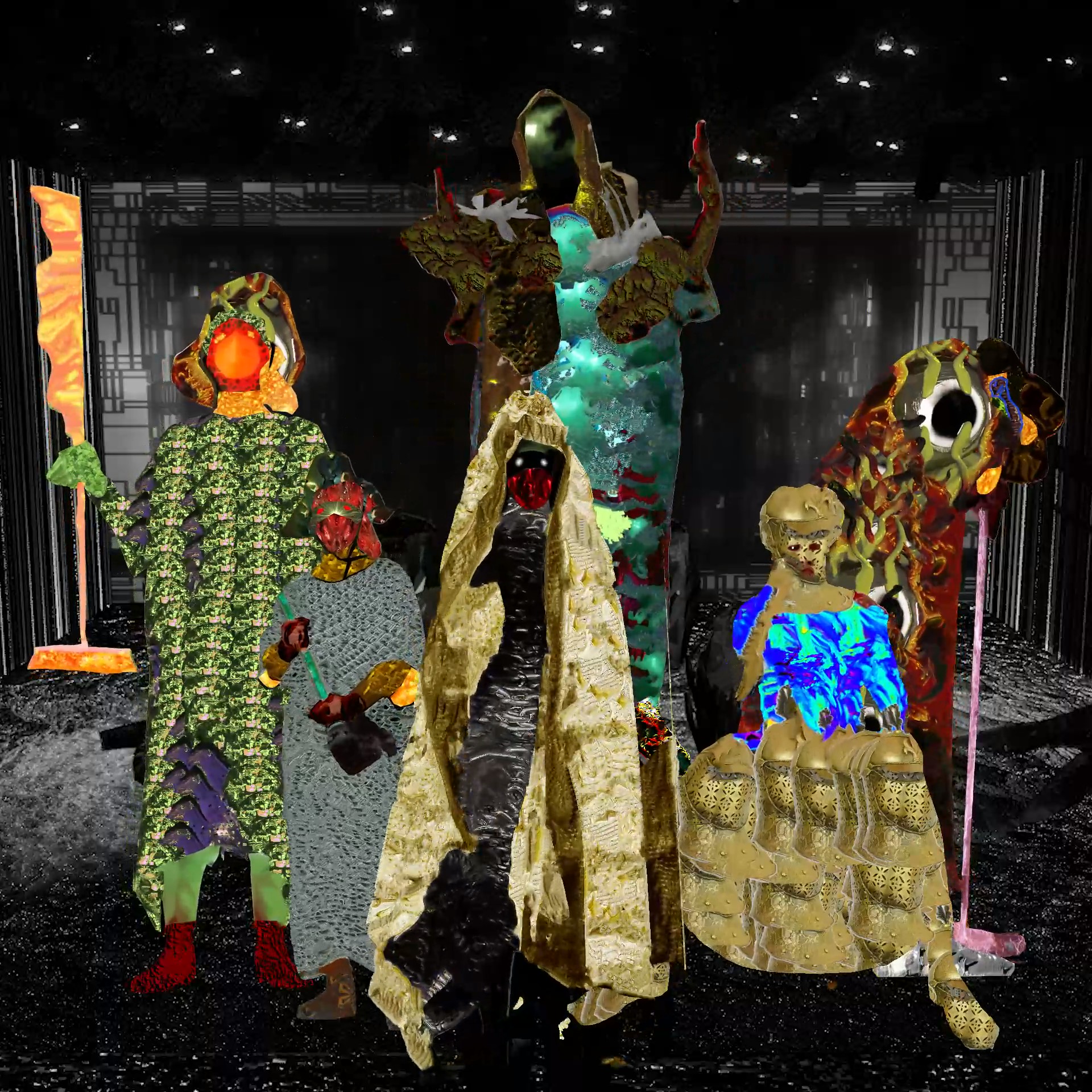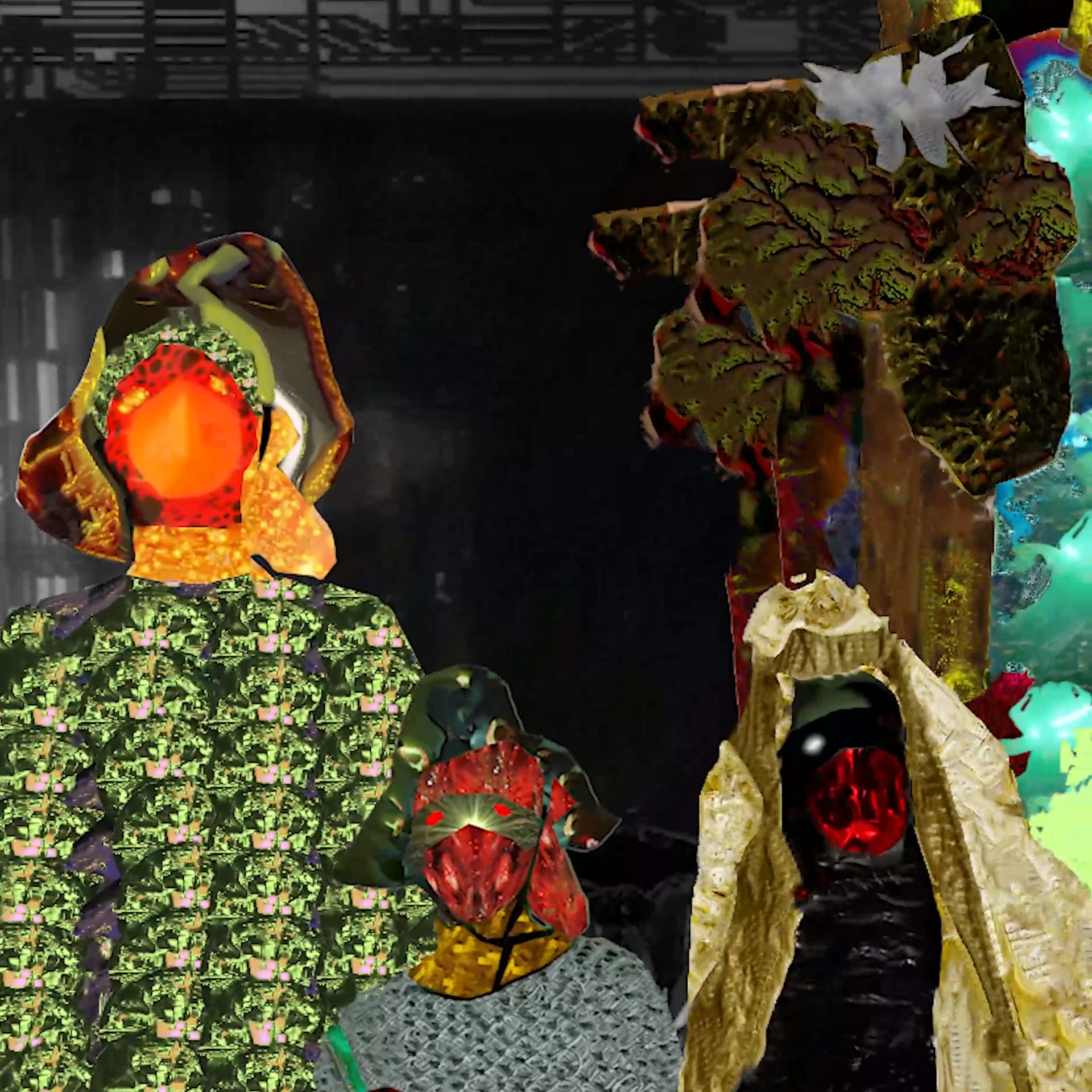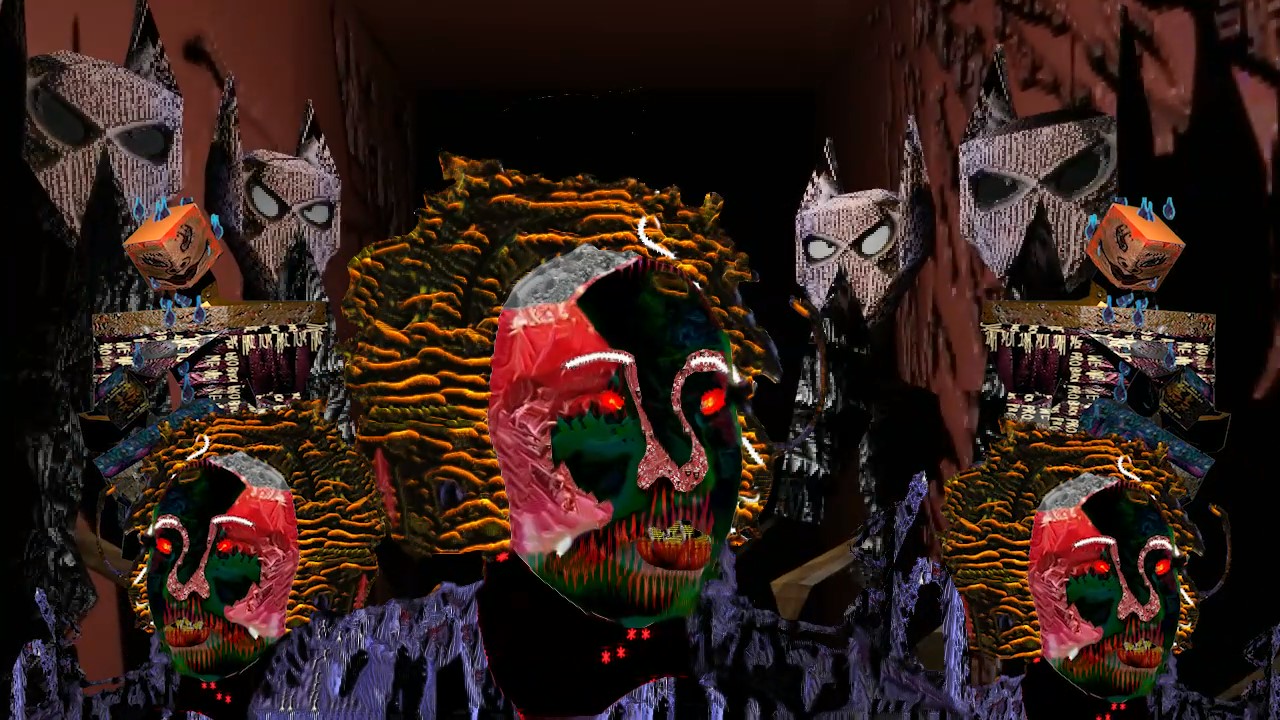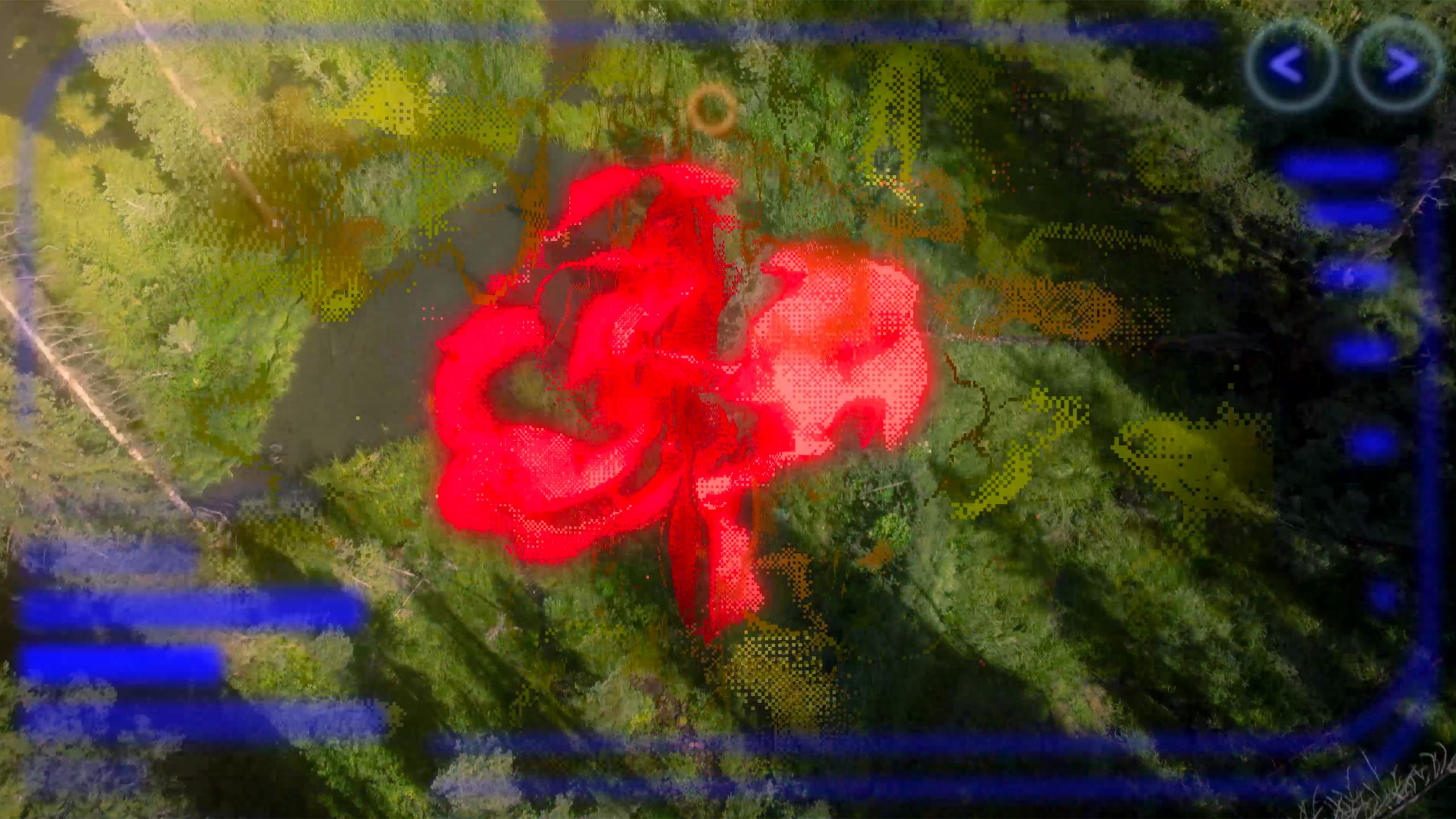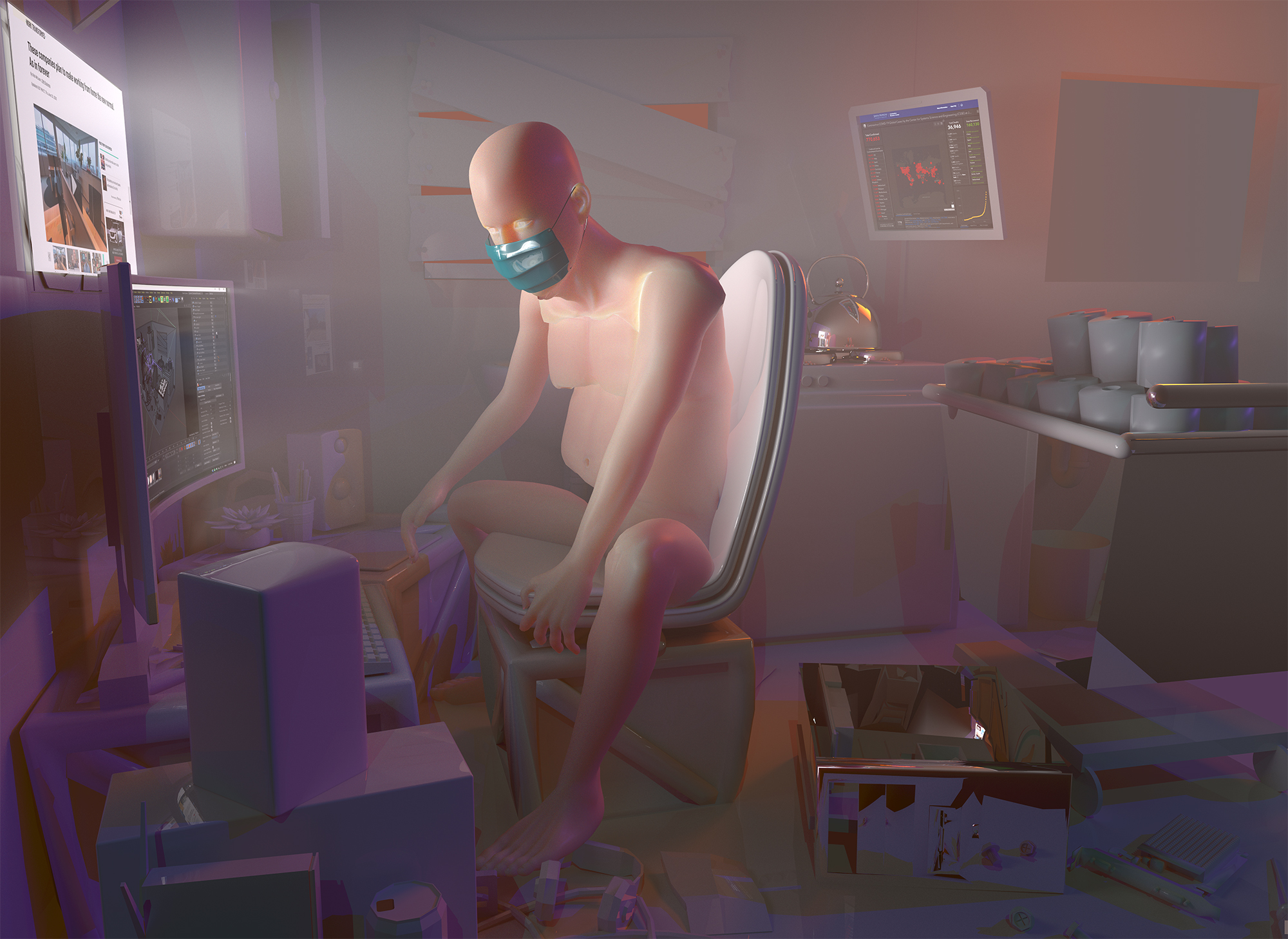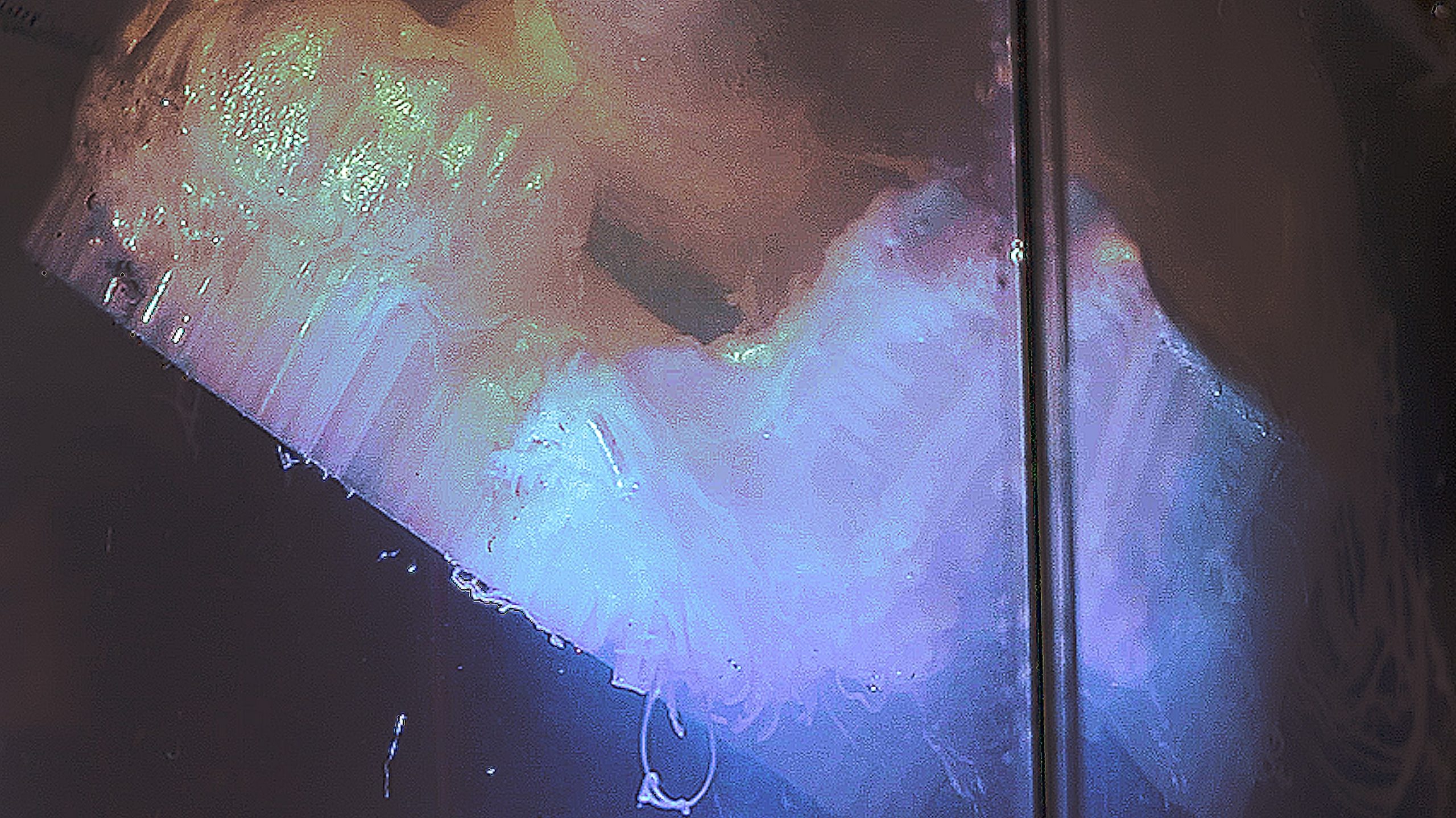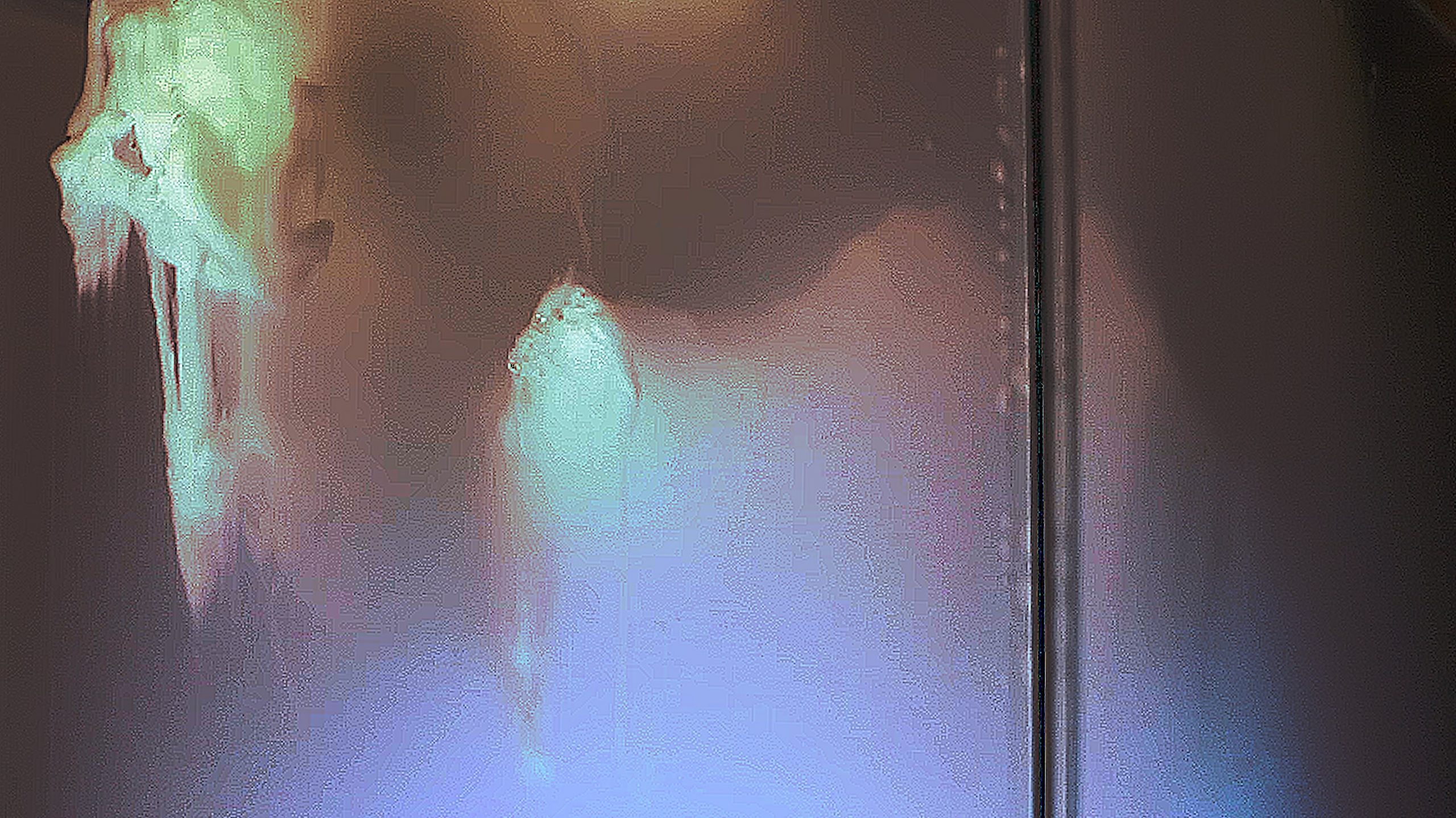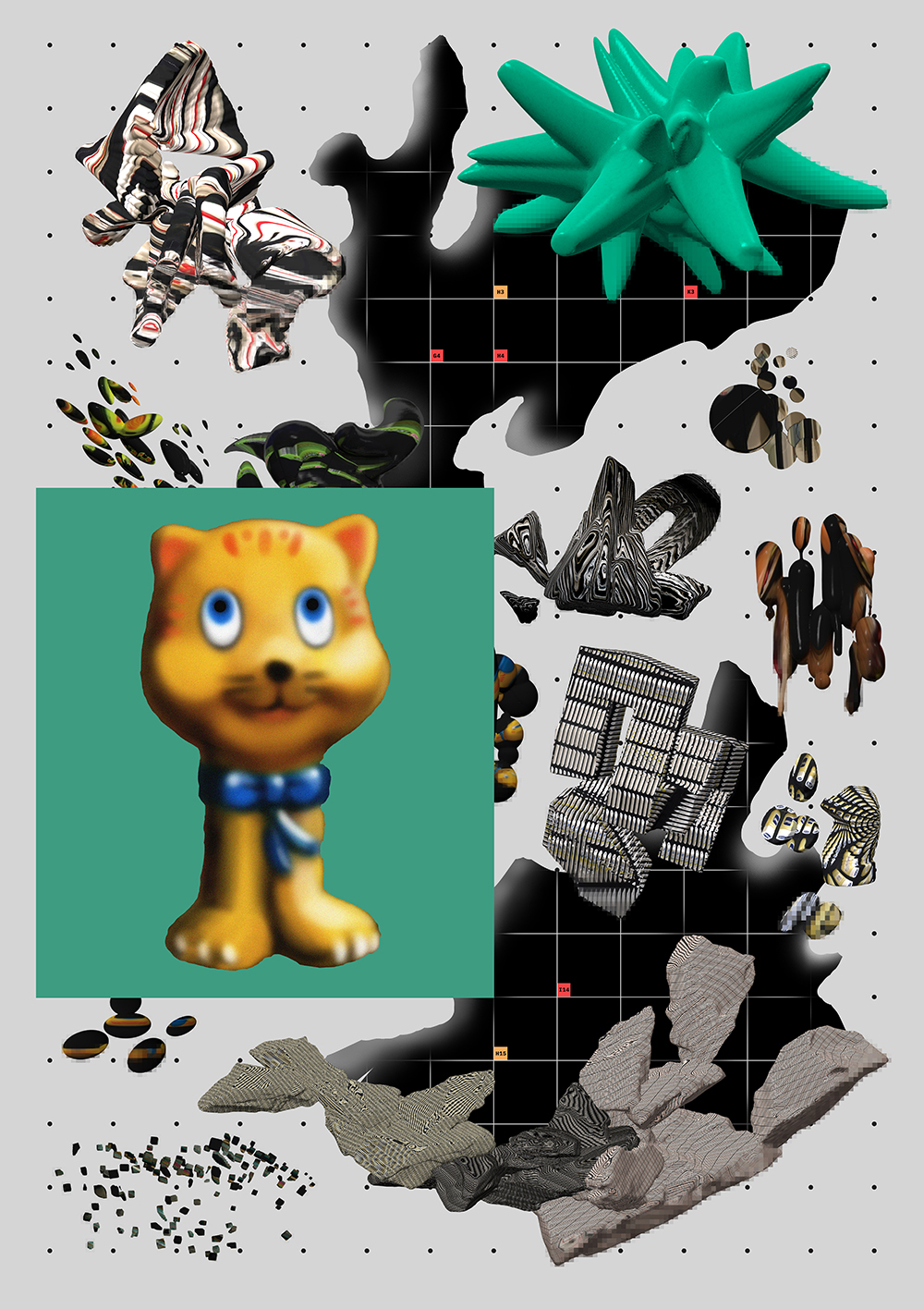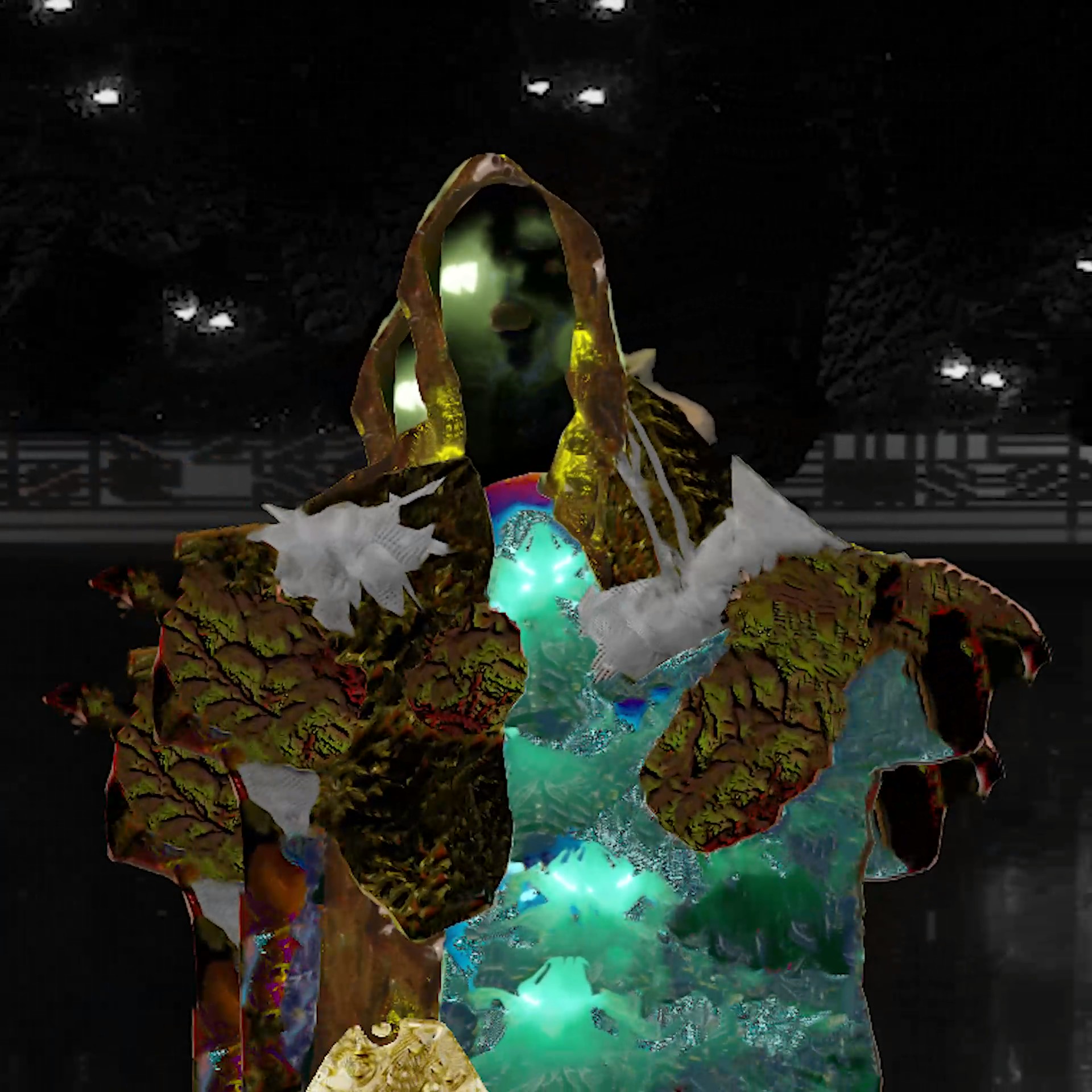
Experimental Models
Participating Artists:
Danielle Brathwaite-Shirley
Mark Dorf
Kit Son Lee
Umber Majeed
Sam Rolfes
Rachel Rossin
Mark Sabb
Ziyang Wu
Heejoon June Yoon
There’s probably no word used more provocatively than experimentation in digital media art, software-based art, and algorithmic art. A scroll through a mainstream online marketplace floods one with dazzling, hyperreal textures, shapes, and forms, a constellation of endless algorithmically-generated mandalas. In this sea, works can be stripped of context and history and precedent, and nearly every piece, it seems, can make claims toward being experimental, shorthand for slick, new, and awe-inducing.
Even so, what can experimentation mean at this moment of explosive production of novel digital assets? How do we recognize experimentation as a form of artistic thinking and strategy, in addition to compositional play? Experimentation—in a single image, a single video—might also indicate strategic approaches toward surveillant technologies, or a deep understanding of ideology built into a platform. Even as it becomes more and more difficult to tell what forms of algorithmically-produced works are truly new, many artists who hand-craft, glitch, and recompose an array of algorithmic and gaming software tools include the public in their thinking, their hybrid approaches, and their considered narratives. We might shift an understanding of experimentation in the NFT space to value the process and thinking and storytelling behind each work, and the models of critical engagement built into any piece that’s quickly sold and exchanged.
In considering the long-term maintenance and viability of the NFT space, we ask:
How do we value and define experimentation in digital, algorithmic, and generative art?
What models of experimentation have artists been inventing in this space for many years?
How do we learn to recognize artistic experimentation and challenging work in digital space?
How does one maintain a practice of experimentation in this wild landscape?
Launching December 8th, 2021, and closing on December 10th, 2021, Experimental Models is an earnest attempt to translate these questions to the NFT space, with the artists gathered: Danielle Brathwaite-Shirley, Sam Rolfes, Kit Son Lee, Umber Majeed, Ziyang Wu, Mark Dorf, Rachel Rossin, Mark Sabb, and Heejoon June Yoon. As a group, they have been inventing models of experimentation, through critical work with and about digital and algorithmic media, for years. They have also maintained a practice of experimentation over time.
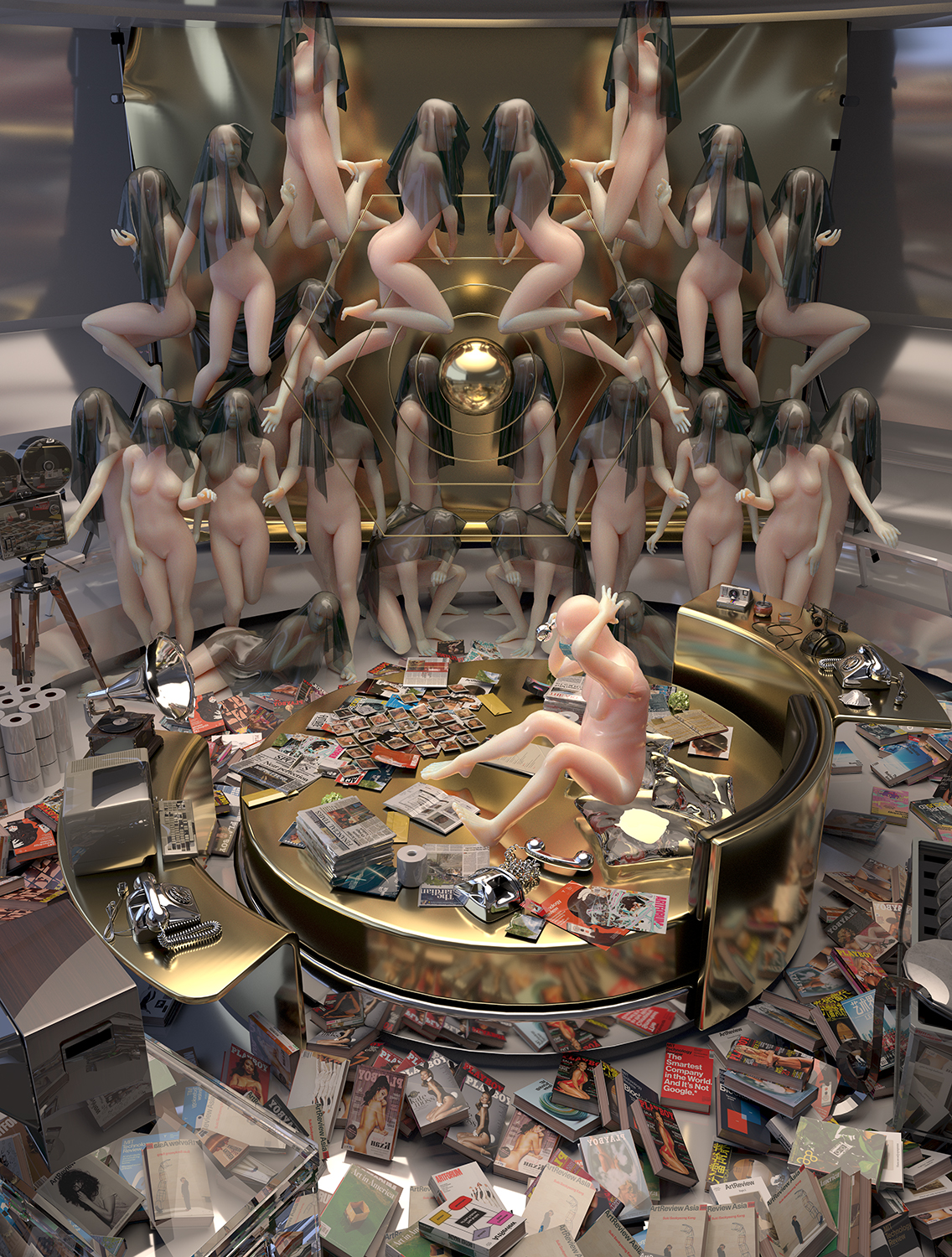
Fittingly, their pieces minted for Experimental Models either showcase a core element of their experimentation, or frame a model for digital experimentation that is sustainable over time. During two roundtable discussions with curator and Topical Cream 2021 Editor-in-Residence Nora N. Khan, these artists share their thinking and research behind each work. They also share strategies for keeping up a sustainable experimental practice. The roundtables focus on how experimentation can translate to new spaces of distribution and collection. The artists describe their methods, the ways they push up against the boundaries of chosen software, and their practice of undoing accepted, calcified methods of digital production. Finally, they link their work to a long history of critical digital media and media art and algorithmic artistic practice.
Through these discussions, Experimental Models foregrounds the need for (cross-generational and intergenerational) sharing between artists who have been experimenting for years and those just starting out. Artists refine, iterate, and apply their experimental methods to their own production, carving out hard-to-find space to create meaningful work. We need their strategies for invention, and maintenance, of practices of experimental making and thinking, particularly in hemmed-in algorithmically-driven, curated, and nudged spaces. We can learn from how they navigate the world online and offline, using their models.
Further, this show is a year-end fundraising effort to support the future health of Topical Cream, which will receive 10% of sales to support its future platforming of femme, NB, GNC, and women artists and writers. Topical Cream is a New York-based non-profit, supporting the work of women and GNC individuals in contemporary art through public programming and digital publishing. Over this editorial year at Topical Cream, we have focused explicitly on how women, GNC, and non-binary experimental artists create models and paths of experimentation in the absence of precedents, and further, maintain them. The authors we’ve commissioned this year have taken up this frame with verve and style: consider recent longform essays like “Re Modeling” by Mandy Harris Williams and “Music is a Vehicle for Perceiving (Or, a Foundation for Artful Intervention)” by Anaïs Duplan, “Emotional Mercenaries,” a conversation with Laurel Halo, and forthcoming commissioned work and interviews by Alexis Pauline Gumbs, Tiara Roxanne, Johanna Hedva, and Astrit Ismaili. Each takes up their understanding of experimental models as they deploy them in their own practice, offering strategies for creating in crisis and beyond.
Experimental Models goes live as an auction on Foundation on December 8th, 2021, and bidding closes on December 10th, 2021. Preview the landing page at Foundation and artist profiles and works here. For information on how to become a collector on Foundation and get involved with the auction, please head to Foundation’s Complete Guide to Becoming a Collector.
Below, please enjoy some previews of the works upcoming in the show, with more to come. Stay tuned for two roundtable discussions in support of the show, in which the artists in Experimental Models walk through their works. Roundtable One features Ziyang Wu, Danielle Braithwaite-Shirley, Mark Dorf, and Umber Majeed. Roundtable Two features Mark Sabb, Kit Son Lee, Sam Rolfes, and Heejoon June Yoon.
